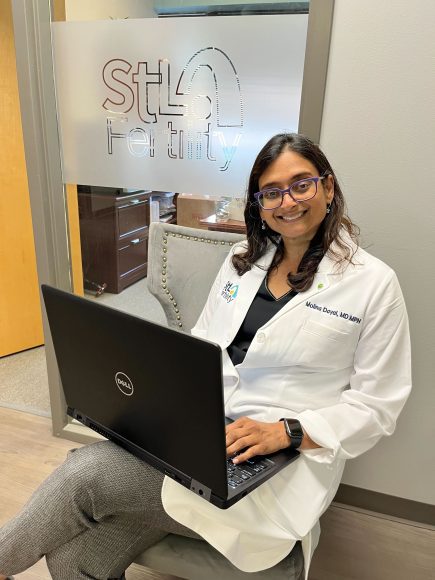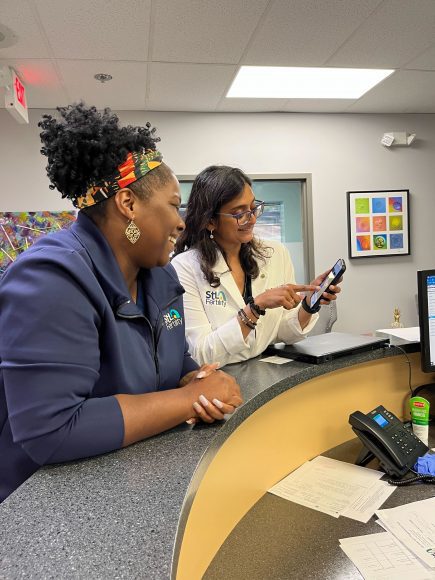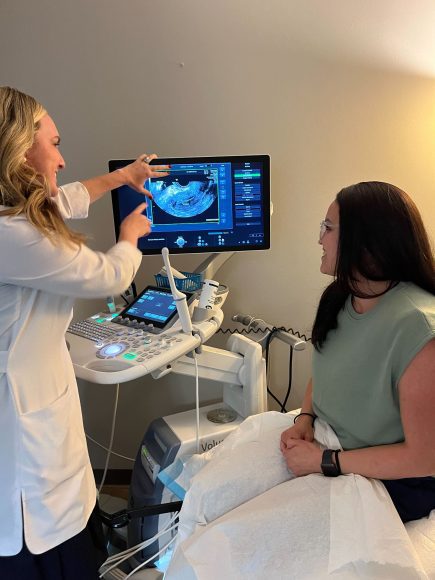For many women, getting or staying pregnant a second time isn’t so easy. Secondary infertility or the inability to achieve a second pregnancy naturally after 6-12 months of trying happens more than you know.
It’s estimated that 12%-15% of women in the U.S. are impacted by infertility – both primary and secondary. And just like primary infertility, secondary infertility isn’t just a “girl thing” and affects men and women equally. A third of secondary infertility cases are related to male fertility issues, 33% are related to female issues, and then the remaining 33% of cases are unexplained.

Dr. Maureen Schulte and Dr. Molina Dayal from STL Fertility, the only female-owned, all-female fertility center based here in Saint Louis, spoke with STL Mom about the causes and treatments for secondary infertility.
“Essentially, secondary infertility and primary infertility look very much alike and are treated very similarly, which is good. Success rates have never been higher in our field,” commented Dr. Schulte.
“Many patients with secondary infertility are shocked when they can’t get pregnant again as easily as the first time. Just like primary infertility patients, we’ll do a comprehensive fertility workup on both the female and male, and we’ll also take a lot of time to hear their stories. They need emotional support; anger and frustration happen with these patients, too.”
The connection between age and infertility is well known and remains an important clue to finding success for secondary infertility patients. “It’s worth mentioning again, but maternal age remains our biggest strength and/or weakness when trying to get pregnant and have a baby. If you’re under 35, your eggs are likely to be of higher quality, and you’ll have more of them,” offered Dr. Dayal, who has been very open about her own struggles with infertility. “If your first was at 35 and you’re now 37 years old, your body and ovarian reserve or number of eggs and the genetic quality of those eggs
can be very different just two years later.”
can be very different just two years later.”
Like primary infertility, the causes of secondary infertility include:
- Maternal age – If you’re over age 35 and have been trying to get pregnant or can’t stay pregnant for six months or more, you should speak with your OBGYN or a fertility specialist. A comprehensive infertility workup is covered by many insurance plans and can help you save valuable time.
- Egg Quantity & Egg Quality – Women are born with over 1 million eggs, but by age 35, that number could be 50,000 or less. The older you are, the fewer eggs you have. And the quality of those eggs also diminishes over time. Thanks to technologies like preimplantation genetic testing for aneuploidy (PGT-A), a patient who only has a few eggs and produces only a few embryos has a good chance of success by screening embryos for chromosomal imbalances.
- Uterine Issues – If your first pregnancy was a cesarean delivery, scaring may be an issue to maintaining a pregnancy. Ultrasound examination of the uterus can help find issues.
- Weight Gain & Body Changes – Maybe you put on some weight after your first child, often, changes in BMI can impact pregnancy for many patients. Hormonally speaking, your body might be different since your first. Get a work-up with a fertility specialist and current assessment of key fertility hormones like FSH, Estrogen, and Progesterone.
- Semen Analysis – Sperm quality and quantity can vary over time, so men should get tested too! Testosterone can decline with age and helps with sperm production.
Treatments for secondary infertility are basically the same as those for patients with primary infertility. They include:
- intrauterine insemination (IUI)
- in vitro fertilization (IVF)
- preimplantation genetic screening (PGS)
- frozen embryo transfer (FET)
- surgery
- fertility medications like Clomid, Menopur, Follistim, and Gonal-F.

Dr. Dayal, Medical Director at STL Fertility, stressed the importance of individualized care when treating secondary infertility, “At STL Fertility, we offer a full range of fertility treatments that are well
studied and effective. It’s really about what the patient needs. Treating infertility shouldn’t be a one size fits all experience.”
studied and effective. It’s really about what the patient needs. Treating infertility shouldn’t be a one size fits all experience.”
“We understand what these patients are feeling and connect the science of treating infertility with the must-have levels of emotional support,” shared Dr. Schulte, who sees empowering her patients as
important as educating them. “Most have done their homework. What they need is a friend or a coach to connect the dots from trying to get pregnant to being pregnant – first or second time.”
important as educating them. “Most have done their homework. What they need is a friend or a coach to connect the dots from trying to get pregnant to being pregnant – first or second time.”

To learn more about STL Fertility or Dr. Molina Dayal and Dr. Maureen Schulte, visit
www.stlfertility.com today!











